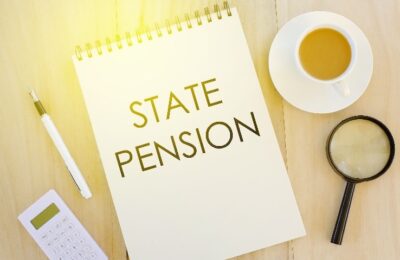Much as I enjoy reading the Financial Times, I always turn to it with a slight feeling of trepidation. Why? Because I often seem to find articles that make me worry that the taxman wants to clean out my bank account. One of these relates to the Pensions Annual allowance.
Luckily I didn’t find any panic-inducing articles today but one piece did get me thinking about my pension. It’s worth summarising, because it’s quite possible that you need to follow its advice if you want to avoid being hit by an unexpected tax bill.
Check your pension savings limits now!
According to HMRC, thousands of people who put money into their pension each year are inadvertently failing to declare pension tax charges.
In a nutshell, when you are filling in your annual Self Assessment Tax Return, you’re supposed to tell the taxman if you’ve put more in your pension than your yearly pension savings limit. This is £60,000 for most of us but tapers down to only £10,000 for the highest earners. If you exceed your annual limit, you pay tax charges at the rate you pay income tax. And if you are already drawing your pension flexibly then you need to consider the MPAA which is set at £10,000.
The important point here is this: you need to declare the extra pension savings, even if your pension scheme is paying the tax you owe.
Many pension savers aren’t aware of this, largely because pension schemes are only required to let you know if you go over the £60,000 limit. So, if your limit is somewhere between £10,000 and £60,000, you may be unaware that you’ve exceeded it.
Lots of people have ended up with unexpected bills because of this. Notably, lots of NHS doctors have ended up with demands because they had done extra shifts that pushed them over the limit!
Have you gone over your pensions annual allowance savings limit?
The key to working out whether or not you’ve gone over your pension savings limit is to understand the tapered scale between the £60k and £10k allowances.
The calculations of this are fairly complex however as they depend on you being able to calculate your “Threshold Income” and your “Adjusted Income”. And this isn’t at all straightforward. Our advice is that if you are earning around and about the £260,000 mark, then you should seek expert advice.
HMRC has woken up to discrepancies in Self Assessment returns because pension schemes have reported and paid members’ annual allowance tax charges, without those charges being reflected in personal tax returns.
The takeaway piece of advice, therefore, is aimed largely at higher earners. If your income is high enough to take you into the tapered savings limit, check with your accountant that you haven’t failed to declare annual allowance tax charges. If you’d like any help doing this, please get in touch.
About Kevin Wheeler
My career in the financial services industry started over 30 years ago and I joined Sterling & Law in 2014.
I can offer a wealth of experience in both the personal and corporate sectors, in areas such as (workplace) pensions, pension transfers, retirement provision, life insurance, investment and inheritance tax planning.
I am also Sterling & Law’s specialist auto enrolment project manager, designing, planning and implementing auto enrolment solutions for employers since the auto enrolment regulations were introduced in 2012.
I provide a thorough professional service and aim to develop lasting relationships with my clients.
I am married with two teenage children and enjoy playing tennis, table tennis and going on bike rides with the family.












